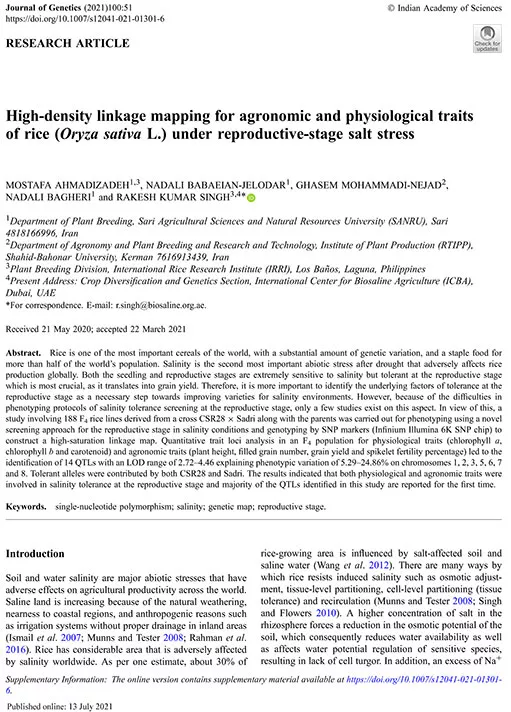High-density linkage mapping for agronomic and physiological traits of rice (Oryza sativa L.) under reproductive-stage salt stress
Rice is one of the most important cereals of the world, with a substantial amount of genetic variation, and a staple food for more than half of the world’s population. Salinity is the second most important abiotic stress after drought that adversely affects rice production globally. Both the seedling and reproductive stages are extremely sensitive to salinity but tolerant at the reproductive stage which is most crucial, as it translates into grain yield. Therefore, it is more important to identify the underlying factors of tolerance at the reproductive stage as a necessary step towards improving varieties for salinity environments. However, because of the difficulties in phenotyping protocols of salinity tolerance screening at the reproductive stage, only a few studies exist on this aspect. In view of this, a study involving 188 F4 rice lines derived from a cross CSR28 × Sadri along with the parents was carried out for phenotyping using a novel screening approach for the reproductive stage in salinity conditions and genotyping by SNP markers (Infinium Illumina 6K SNP chip) to construct a high-saturation linkage map. Quantitative trait loci analysis in an F4 population for physiological traits (chlorophyll a, chlorophyll b and carotenoid) and agronomic traits (plant height, filled grain number, grain yield and spikelet fertility percentage) led to the identification of 14 QTLs with an LOD range of 2.72–4.46 explaining phenotypic variation of 5.29–24.86% on chromosomes 1, 2, 3, 5, 6, 7 and 8. Tolerant alleles were contributed by both CSR28 and Sadri. The results indicated that both physiological and agronomic traits were involved in salinity tolerance at the reproductive stage and majority of the QTLs identified in this study are reported for the first time.
Year
2021
Publication Source
Journal of Genetics
Publication type
Scientific Paper
Volume/Chapter/Issue
51











